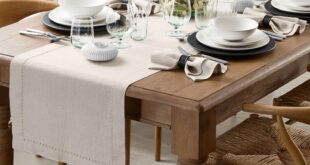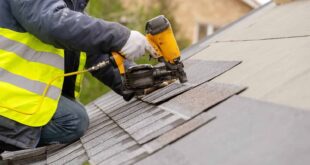Adding a deck to your house is one of the best ways to add seating and lounging area to your property. Decks are a great and welcome addition to any home. They add a certain finishing touch that not a lot of other things do. However, planning and designing a great deck isn’t easy. You have to think about which type of material you want to use, what colour you want your deck to be and finally, you want to decide on a finish for your decking ends. Just like with the rest of it, there are numerous ways to finish the decking ends. Today, we’ll present you with some of the best and most popular options out there.
Table of Contents
Picture Frame
One of the most common and most popular finishes is the so-called picture frame. As you can probably tell by the name, the picture frame is a type of finish that encompasses your deck with the boards running around it – like a frame. Picture frame is not only a touch-up or a design feature – it has additional purposes as well.
First of all, it adds to the overall look and appearance, sure, but on top of that, it protects the joist and adds to the structural stability and durability of the deck itself. By choosing a picture frame for a finishing touch you also increase the life-span of the whole deck. On top of all that, since the frame is not directly connected to the boards, you’re creating the gap and preventing the water damage you might otherwise suffer to some extent. The gap allows for good drainage and even provides room for expansion and contraction of the composite boards.
However, all of this comes at a cost. Picture frame is not cheap. You’ll need an additional joist and extra boards to hide the ends. Additionally, because of the contraction and expansion of the composite boards, the mitre joints will open and close, which will affect the overall appearance of the structure. But, all of these seems quite irrelevant once you consider the benefits of a picture frame.
Raised Fascia Board
Although picture framing is very popular and looks great, it requires additional planning and effort and even raises the cost of the project. If you’re looking for something less expensive, but still effective and good looking – you might consider hiding the edges by using fascia boards. It’s a method that requires less planning and costs less while also providing you with an overall polished look and protection of the edges.
Installing them is rather simple according to this website. All you’ll require is the same composite material you made the deck out of. You’d start by measuring the edges of the patio and cut the boards accordingly. Once you’ve done that, all that is left to do is to attach the boards to the rim joists.
The only thing to consider is the durability of the fascia boards. What this means is – they’re not made to be walked on, but then again, how often will you walk on the edge of your patio? Not often we’d presume. They could be susceptible to water damage as well, but with the proper installation that shouldn’t be an issue you should worry yourself about.
Paint The Edges

The main reason people decide to cover the edges is the fact that the edges of the boards aren’t the same colour as the rest of it. The material the boards are made of, in this case, composite, is wrapped with an outside layer that’s coloured to your liking, but the inside of it is to classic composite colour.
One of the ways to solve that issue is to simply paint the ends with the matching colour. This is by far the easiest and arguably the most cost-efficient way to deal with the finishing. You could find the paint you need for less than $20, grab a brush and get to painting.
However, if you’re really going for the finished look, this may not be the option for you, because, in the end, you’re still left with a cut end that’s just painted over. if you don’t mind – great, but most people don’t really take this route.
Glued On Veneer Cap
Remember the outside layer we’ve mentioned a while ago? The one that’s wrapped around the composite decking boards? Well, you can use that to cover the exposed ends. Unlike painting, which only provides you with a matching colour, this method allows you to match the texture as well. This will make the whole thing look consistent and even from every angle.
However, this sounds way easier than it actually is. for starters, you can’t buy a veneer cap. They’re not up for sale. So, if you do decide to go this route – prepare yourself for some extra work. You’ll need tools, time and skill to pull this off. Why? Well, you’ll literally have to scrape off the veneer cap of the boards, cut them up to proper height and width and then glue them on. Additionally, if you think that glueing is the easiest part of the process, you may be wrong – it’ll be very time-consuming.
However, if you have the tools, skills, time and will to do all that – go ahead. Otherwise, it might be better to consider some of the other options.
Vinyl Stair Nosing
There are a couple of different nosing materials that you can use, but the most popular is vinyl. Alongside painting the edges, this is the easiest method to finish the decking ends. All you have to do is get the nosing material, measure it, trim it and then screw or glue it down to the patio.
The only thing to think about here is how you want it to look. Do you want a uniformed look or a contrast for the edges? That’s entirely up to you. In both cases, you’ll be done quickly and it won’t cost a lot.
The only disadvantage of this method is the fact that it doesn’t last as long as the decking does, but considering how fast the installation is – you shouldn’t worry too much about it.
There you have it. Those were some of the most popular methods of finishing the composite decking ends. Hopefully, you’ve got some good ideas out of this article and once the time for finishing touches come – you’ll know what to do.
 World Magazine 2024
World Magazine 2024






